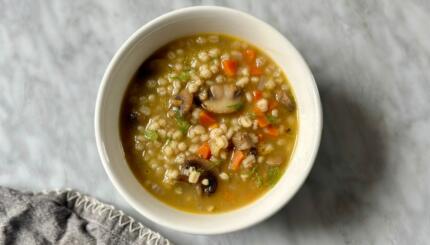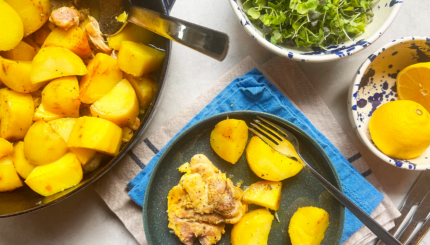Looking past Rosh Hashanah and Yom Kippur, I am excited by the coming of Sukkot. Today, I primarily identify as Jewish but I grew up celebrating both Catholic and Jewish holidays. While I have left most Catholic ritual behind, there is no question in my mind that when it comes to Sukkot and Day of the Dead there is a great deal of overlap and I continue to honor my Mexican heritage.
Day of the Dead is not commonly compared to Jewish traditions, but as Sukkot approaches, I find myself drawing new connections to Día de los muertos or Day of the Dead. Both Sukkot and Day of the Dead have an emphasis on remembering those who came before us. Before college, I was unfamiliar with Sukkot. I had never built a sukkah or heard the term ushpizin, meaning “guests,” figures from the past that we invite to join us in the sukkah. I began to understand that Sukkot is a time for honoring nature, harvest, and those who came before us. With the building of a temporary structure, the holiday creates a physical space to break from our daily lives and reflect on the goodness of the earth and honor the legacy of those who paved the way for us.
As part of my Mexican heritage, I have celebrated Day of the Dead with my family since I was a child. After grieving the death of loved ones, I would have the opportunity each year to celebrate their lives with food, music, dancing, and sweets and welcome their spirits back to earth, a ritual shared by Mexicans all over the world.
The common thread between the two celebrations is that we recognize and remember ancestors and loved ones, welcoming them back into our lives. As we celebrate Sukkot, invite ushpizin into our sukkah, spirits that represent values and qualities of Judaism’s greatest contributors like Abraham and Sarah or Moses and Miriam, but can also be the spirits of our own family and friends. As it is a joyful harvest holiday, it is common practice to decorate the sukkah with harvest foods and artwork. Similarly, for Day of the Dead, we invite our ancestors to visit our family.
For Day of the Dead, families construct and decorate altars, known as ofrendas, with specific foods, gifts, flowers and photos of loved ones who they are honoring. Each item on the altar symbolizes something different, and each family and community decorates their altars in a different way. For my altar this year, I have placed photos of my deceased great-grandparents, three grandparents and uncle, who I invited back into my home guided by the four candles to provide a lighted path back to this world. My altar includes offerings of their favorite foods and family recipes, their favorite jewelry, salt for purification, sugar skulls or calaveras for sweetness, cempasuchitl or marigolds to represent the fleeting nature of life, and festive flores de papel or paper flowers. Flores de papel as well as papel picado (paper banners) are made in an array of colors with unique designs.
For both Sukkot and Day of the Dead, we create physical space to celebrate with our families and communities. For each holiday, we set aside time to construct temporary beautiful spaces and ritualistically contemplate our connection to the past. Not only will I invite my family and friends who have died to the sukkah this year, but I will also invite meaningful and inspiring figures in Jewish and Latinx history. I would love to share my sukkah with Miriam, the first woman to ever be called a prophet, and Deborah, the sole female judge who was also a prophet. These two women exude power, strength, justice, and challenge traditional societal norms within Jewish history and have inspired me since I was a young girl. I would also like to invite Anita Brenner, the Mexican-born, Jewish-American woman who became the driving force of The Mexican Renaissance, introducing the world to artists like Diego Rivera and Frida Kahlo. It would be meaningful to invite these moving Jewish women who evoke a sense of faith and power within me.
As I continue to grow as a person and a Jew, my Sukkot experience is still evolving. This year, I will be bringing together my Mexican and Jewish heritage as I celebrate each holiday. Please join me at the JCC East Bay in making colorful Mexican-inspired flores de papel to help decorate the community sukkah and honor my traditions.



